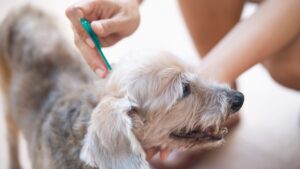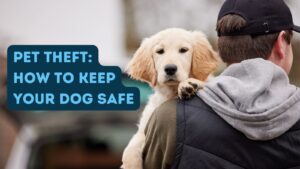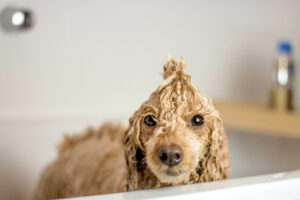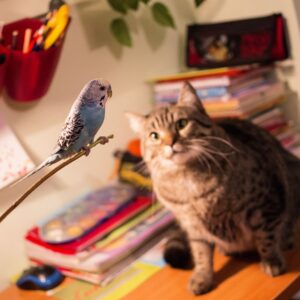Posts Tagged ‘cats’
Tips to Keep Your Pets Safe this Independence Day
 A lot of people will be celebrating Independence Day on July 4th. It is important to think about our pets also and plan ahead. As much as we like a fun time celebrating, a lot of pets are scared to death with the fireworks and crowds. It is important to talk to your veterinarian about possibly getting some sedatives to relieve the anxieties associated with them and get advise from them to find out what might be best. It is best to leave your pets inside with the shades pulled down and maybe the tv or radio playing to try and muffle the explosions of the fireworks. Several communities have firework shows that are fantastic to watch, however LEAVE YOUR PET AT HOME. The loud reports can scare the pets and make them a nervous wreck.
A lot of people will be celebrating Independence Day on July 4th. It is important to think about our pets also and plan ahead. As much as we like a fun time celebrating, a lot of pets are scared to death with the fireworks and crowds. It is important to talk to your veterinarian about possibly getting some sedatives to relieve the anxieties associated with them and get advise from them to find out what might be best. It is best to leave your pets inside with the shades pulled down and maybe the tv or radio playing to try and muffle the explosions of the fireworks. Several communities have firework shows that are fantastic to watch, however LEAVE YOUR PET AT HOME. The loud reports can scare the pets and make them a nervous wreck.
Talking about celebrations, there is usually a lot of good food for people, but avoid allowing your pet to counter surf and eat the table food. Some foods such as grapes are toxic for pets, while other greasy and fatty foods may lead to a gastric illness like pancreitis. These illnesses might then require a trip to see your veterinarian and possibly be costly and deadly.
If you and your family are around water during the holiday, it is important to have a life jacket handy for your pet, as not all dogs are great swimmers. Whether it is on a lake or in the pool, the dogs may tire and then start to struggle and panic. A life jacket for your pet may be able to keep your pet safe.
We are happy to have a conversation about any concerns you have. Make sure to protect your furry companion this summer. Contact our offices today!
How to Choose the Right Flea and Tick Medicine for Your Dog
 With the weather being nice, people and pets are tired about being cooped up inside. They are starting to enjoy the fresh air, the calm breezes in their face and the warmth of the sun. But whether it is a walk in the park, a weekend camping along the lake or even lounging around your front yard, fleas and ticks could be waiting to latch onto your pet and hitch a ride. So because of this, application of a flea and tick control or collar is essential to prevent them from infesting your home.
With the weather being nice, people and pets are tired about being cooped up inside. They are starting to enjoy the fresh air, the calm breezes in their face and the warmth of the sun. But whether it is a walk in the park, a weekend camping along the lake or even lounging around your front yard, fleas and ticks could be waiting to latch onto your pet and hitch a ride. So because of this, application of a flea and tick control or collar is essential to prevent them from infesting your home.
There are many factors to consider when choosing the optimal product. One must decide if they want a collar, topical or chewable tablet. Each one has their pro’s and con’s about them. The collars and topical products such as Frontline or Advantage have been around a lot longer and may be less expensive to buy, but we have seen breaks in protection because the fleas and ticks have gained resistance or the product has not been used properly. Some of those products are approved by the EPA so they might not be safe to use on your pet. Recently new products such as Nexguard or Bravecto have been developed that are taken orally. Because they are newer products, the fleas and ticks have not developed a resistance to them. Also since they are ingested, they are approved by the FDA to assure their safety to the pet.
There are several oral products available like Simperica Trio that will also control other parasites, along with fleas and ticks. So they may be more expensive but be more convenient in the long run.
The best thing to do is to have a conversation with your vet about what is best for your pet, as well as what works for you financially. We are happy to have a conversation about any concerns you have. Prevention is key, so make sure to protect your furry companion this summer. Contact our offices today!
Cat Safety Tips: How to Protect Your Furry Companion
 Many of us have those 4-legged feline friends that love to hunt and no amount of domestication has changed their inherent desire to patrol their domain in the hunt for prey. We have all seen the look of pure joy on our cat’s faces when they watch birds and small rodents from the window. And because cats are naturally curious, they love to explore. That is why some people allow their cats to spend considerable time outdoors. The downside it that the outdoors has many dangers that can linger and it is our job as responsible owners to keep them safe.
Many of us have those 4-legged feline friends that love to hunt and no amount of domestication has changed their inherent desire to patrol their domain in the hunt for prey. We have all seen the look of pure joy on our cat’s faces when they watch birds and small rodents from the window. And because cats are naturally curious, they love to explore. That is why some people allow their cats to spend considerable time outdoors. The downside it that the outdoors has many dangers that can linger and it is our job as responsible owners to keep them safe.
While most experts would recommend that the best thing to do would be keeping them indoors, you can allow them to get some fresh air in a relative safe environment away from predators that would prey on your cat and making sure that they are protected when they go outside.
Some owners may try to leash train their cat. This is one of the easiest means of monitoring where your cat goes because you get to go along for the walk. Cat’s generally dislike harnesses, so they will need to be made accustom to using them first. This may entail having the harness on inside and provide positive reinforcement with treats. Supervised outdoor time is a great way to bond with your cat and give her the mental stimulation that her wild instincts crave.
Whether you allow her to roam free or keep her as close as possible, it is important for the cat to either have a microchip or some other form of identification on your pet. If you use a collar, a safety collar with an elastic panel will allow your pet to break free if it gets caught.
To allow cats to have the ability to go outside, some owners make a catio that keep predators out and their pet in. This can serve as an outdoor playground within the vicinity of your home. You can feel safe knowing where it is and that she is not running out into the street or being picked up by predator birds or other mammls.
If your cat goes outdoors, it is at risk to the diseases and parasites that the outdoor feral cats have. So it is important to have your pet’s vaccines updated and kept on flea and tick control.
Your back yard can be dangerous to your pet if you have planted some toxic plants for landscaping. Plants like lillies may look nice in your back yard, but they can be toxic to your pet. It is important to make sure that anything potentially toxic and dangerous be picked up and secured. I would also recommend not having mouse poisons available because not only would the poison be toxic, eating a dead mouse that has succumbed to the poison may be also lethal to the cat.
It is important to have a regular dinner time. That way when the cat’s return for it evening meal, they will be able to be locked up for the evening. This will protect her from the nightly predators and allow her to go on daily patrol the next morning.
For any more questions on cats, or any other furry companion, contact our offices today!
National Pet Theft Awareness Day
 Our pets are very important to us and we rely on them for comfort and support every day. So it is devastating and hard to believe that a pet would be stolen. Every year about 2 million pets go missing with only about 10 percent returned home. These figures have alarmingly risen about 37 percent since 2007. So in honor of National Pet Theft Awareness Day which is being celebrated on February 14, I am going to blog about why they are stolen and how to reduce the possibility of your pet being dog- or cat- napped.
Our pets are very important to us and we rely on them for comfort and support every day. So it is devastating and hard to believe that a pet would be stolen. Every year about 2 million pets go missing with only about 10 percent returned home. These figures have alarmingly risen about 37 percent since 2007. So in honor of National Pet Theft Awareness Day which is being celebrated on February 14, I am going to blog about why they are stolen and how to reduce the possibility of your pet being dog- or cat- napped.
There are quite a few reasons why someone may steal a pet. According to PetFBI, these are the most common:
- Pet Flipping: Popular breeds of dogs can be “resold” online or in the paper.
- Reward: Some pets are stolen in hopes the owner will offer a reward, which the thief will then claim
- Puppy Mills: Pets that have not been spayed or nuetered may be turned over to backyard breeders or puppy mills
- Dog Fighting Rings: Small dogs and cats have been stolen to be used as “bait” for dog-fight training. The large breed dogs are often used as dog fighting candidates.
- Neighbors: If pets have been known as “nuisances” neighbors have been known to take animals and dump them in other locales.
- Relatives: Sadly, many pet thefts come from family members who are upset with you like in a divorce or family dispute
- Good Intentions: Not all pet-nappings are maliscious. A good-hearted person may believe that they are helping your pet if they feel that the pet is being neglected in some way. This is why you never leave your pet tied up in your yard, keeping them outside only, or have a pet that has signs of being neglected.
There are steps that owners can take to prevent their pets from being stolen. First and foremost, HAVE YOUR PET MICROCHIPPED and make sure that their records are updated. Remember that the microchip is only as good as the registration, so make sure that they are microchipped. In addition, you can:
- Your pets should not be allowed to run free outdoors unattended and make sure that your pets are always wearing a collar and identification.
- Spay and neuter your pets
- Don’t tie up your dog outside of a restaurant or store and never leave your pet in a car.
- Keep dog doors and fence gates locked when you are not at home.
- Have updated photos of your pet with emphasis on special markings
- Install cameras. Indoor and outdoor camera networks are ideal for keeping your pet safe.
Nothing is scarier or upsetting to come home and find your pet missing. It is of most importance to act quickly as every minute matters when you are looking for your pet, whether they have escaped from your yard or have been dog-napped.
If you believe that they have been stolen, immediately report it to the police. This provides a record that is documented and can be used for further action. It is important to canvas the area on foot every day. Creating a “Lost Pet” poster and placing throughtout the community helps others watch for your pet in cars, on the street or at neighbors. Post a lost pet report through your microchip company and your animal control. Avoid posting a reward is being offered.
If you have any other questions about microchipping or keeping your pet safe, do not hesitate to contact our office today.
2022 Pet Gift Guide
 Don’t leave your pet out of the holiday fun! Furry friends like to open gifts too! Here are a few options to show your four-legged pal some love.
Don’t leave your pet out of the holiday fun! Furry friends like to open gifts too! Here are a few options to show your four-legged pal some love.
The Pupsicle is a great opportunity to give your dog a new treat experience. You freeze your dog’s favorite food in the mold, then when it is time for a treat, you put the frozen treat in the Pupsicle. When they’re done, you’re able to open the ball, wash it, and repeat! Find it here.
You can liven up your cat’s drinking experience with a cat fountain. Some cats enjoy moving water more than still, and a plastic cat fountain such as this one here circulates water for cats to drink.
Say you want to get a gift for your favorite pet owner in your life. The company West and Willow makes custom pet portraits that any pet owner will be sure to love. You can find them linked here.
Social media has allowed several pets to become Tik Tok famous. Pets have been trained to use buttons programmed with specific words to communicate with their owners. You can find a starter kit here to try your pet’s hand at internet fame.
For cats that love to play but whose owners don’t love obnoxiously bright-colored toys laying around the house, these handmade cat toys from an Etsy seller are stylish and aesthetically pleasing. They are environmentally friendly as well, made from leftover upholstery fabric. These toys are filled with grounds of a plant called silvervine which is like catnip. If your cat doesn’t really like regular catnip, silvervine is a great alternative. Find these toys here.
Whether you are looking for a gift for your furry friend or a close pet-lover, these gifts are sure to please all. Feel free to contact Dr. Olsen at Olsen Veterinary Clinic at 618-656-5868 with any questions!
Tips and Tricks For Grooming Your Pet

Part of taking care of your pet is regular grooming efforts to keep their coat healthy and your pet comfortable. These tips will help you stay on top of their grooming and keep your pet happy and healthy.
First, be sure to regularly brush your pet’s coat to prevent matting. Especially with long-haired animals. Your pet needs regular brushing regardless of the breed to keep its coat shiny and healthy. The amount of brushing depends on coat length and texture. Longhaired breeds will need more frequent brushing of at least once a week if not every other day. Short-haired breeds like greyhounds or Labradors may need a good brushing only every other week. Matting can cause pain for your pet. This will lead to licking or biting, causing skin irritation which can then lead to skin infections. Be sure to brush your pet regularly to keep their coat healthy.
Second, many pet owners choose to have a groomer take care of their pet’s hair care. That said, if you proceed carefully, you can trim overgrown hair around your pet’s eyes or pays in between professional grooming appointments. Trimming the hair around your pet’s eyes can prevent overgrown hair from blocking its vision and rubbing against and damaging its eyes. When trimming, make sure your pet is calm and lying down, preferably. Move slowly and calmly and use extra caution with scissors. Make sure to reward their calmness with a treat after they are finished.
Third, trimming your pet’s nails will keep them from experiencing discomfort from overly long nails. There are many different tools to do so, and you may have some trial and error until you find what works best. There are plenty of resources found online for guidance on your specific pet and how to trim its nails.
When grooming your pet, be sure to check their ears for ear infections. Ear infections can be painful, so if you notice any inflammation, odd smells, shaking or scratching, discharge, or pain upon touch. If you notice any of these signs during your regular grooming, take your pet to the vet for a checkup.
Grooming your pet is part of their regular care of them such as feeding them and providing them with exercise. With these tips, you can be more prepared for helping your pet take care of itself. Of course, with any questions, feel free to contact Dr. Olsen at Olsen Veterinary Clinic at 618-656-5868.
Tips for Finding a Missing Pet
 A missing furry friend can cause a lot of stress for you and your family. When your pet is missing, it is important to act fast. Don’t waste time waiting for your pet to come home. The sooner you begin to look for your pet, the better the odds are of you finding them.
A missing furry friend can cause a lot of stress for you and your family. When your pet is missing, it is important to act fast. Don’t waste time waiting for your pet to come home. The sooner you begin to look for your pet, the better the odds are of you finding them.
Start your search in your neighborhood or the area the pet was lost. Be sure to let your neighbors know that your pet is missing and ask them to keep an eye out for them.
Thoroughly search the area. Call your pet’s name and check any places where they could have become trapped, such as basements, garages, or under vehicles. A lost pet will often hide during the day, so be sure to go out again at night with a flashlight and call for them if you don’t have luck during the day.
Check with your local shelters daily. Do not just call; visit the shelters to look for your pet. Many animals are difficult to describe over the phone, and only you really know what your pet looks like.
Call all animal control agencies in your town and surrounding areas. Animal control officers work through the police department and pick up stray animals. Call them or check their shelters at least every two days.
Other community resources include local neighborhood groups on apps like Nextdoor or Facebook. Ask your friends and neighbors to share photos of your pet notifying their network that your pet is missing. You can also put up physical lost pet signs in your neighborhood, post offices, libraries, pet supply stores, veterinary offices, and grocery stores. Be sure to inform your veterinarian and groomer that your pet is lost in case they receive a call.
Lastly, there are online services like lostmydoggie.com and lostmykitty.com that after you fill out the information about the pet, will notify shelters, rescues, and vets in the area automatically, providing them with the information you supplied.
A lost pet is a scary time. However, a lost pet with a microchip and a pet ID tag is a lot more likely to find its way back home. A microchip is a permanent pet ID tag that allows for veterinarians and shelters to identify who owns that pet, even if the pet ID tag is missing.
If you have lost your pet, found a pet, or have any questions at all, feel free to call Dr. Olsen of Olsen Veterinary Clinic at 618-656-5868.
Dr. Olsen’s Breed Spotlight: The Peterbald Cat

The Peterbald cat is a loyal and affectionate feline, known for being “dog-like”. They are very friendly, playful, energetic, and smart. The Peterbald is a descendent of the Don Sphynx cat, still bearing some of its qualities like its varying amount of fur, dexterous front paws, big ears, and wrinkly skin. The other feline in a Peterbald cat is the Oriental Shorthair cat. The Peterbald still carries its long and lithe body shape and oblong head shape from them. However, unique to a Peterbald is their long front toes with webbing. It allows them to hold and manipulate toys, unlike many other cats.
The Peterbald’s fur varies from a velvety, fuzzy fur to a completely hairless cat. There is even a type that doesn’t even have whiskers or eyebrows, making their skin feel sticky to the touch. Also interesting is that Peterbald’s fur changes throughout their life. This means that if a Peterbald has one of these coats at birth, it can change significantly during their first two years of life, and the hair can be altered, gained, or lost.
The care of Peterbald cats varies based on their coat. If they have a thin fur coat or no hair at all, they require weekly bathing and wipe downs to keep their skin free of harmful oils. Since Peterbald cats can have very thin coats, they need to be kept as inside cats. Moreover, many Peterbald cats can sunburn, have sensitivity to extreme temperatures, and can be easily injured when playing with other cats or children. But given proper care, these cats are relatively low maintenance and have very few associated breed-health issues.
If you are looking to adopt a Peterbald, know that these cats are still somewhat rare, so acquiring one is not an easy feat. Be sure to check with animal shelters, rescue groups, and reputable breeders to see if a Peterbald is needing a forever home. Since they are often not readily available, it can be difficult to find a Peterbald kitten. Important to note is that hairless cats are often sold for higher prices.
If you have any questions, feel free to contact Dr. Olsen at Olsen Veterinary Clinic at 618-656-5868!
Can Cats and Birds Cohabitate?
 Cats and birds are natural opposites. Some cats won’t care about birds at all. Other times, the cat’s instinct to pounce, capture, and “play” with the bird will emerge. Either way, if you have a cat and bird cohabitating, it is important to have the proper precautions in place to keep both animals safe and healthy.
Cats and birds are natural opposites. Some cats won’t care about birds at all. Other times, the cat’s instinct to pounce, capture, and “play” with the bird will emerge. Either way, if you have a cat and bird cohabitating, it is important to have the proper precautions in place to keep both animals safe and healthy.
Cats can kill or hurt a bird very easily. With its sharp claws, it can wound the bird and possibly even give it an infection. Cats also pull out important feathers needed for flight, balance, and warmth. They can cause serious mental trauma to a bird that has endured an attack or threat. Cats can even eat small birds. Even though a cat is more dangerous to a bird than a bird is to a cat, bigger birds can seriously hurt a cat. With their strong beaks and claws, they could grab and bite a cat.
Even with the risks, there are ways that you can keep both the cat and bird safe. First, secure the bird cage in a serious manner. Make sure that the cat cannot get inside or knock the bird cage over. Small cages are often placed on tables and are easily knocked over. Make sure the cage is heavy enough that the cat cannot push it around. Be sure to use cage locks or carabiners to make sure the cat cannot open the bird cage doors.
Next, keep them in separate rooms. If you keep the bird cage in a room that the cat is not allowed it, you can avoid the extra stress that a stalking cat can cause for a bird.
Lastly, try and introduce your bird to your cat. It is typically a very slow process, and it starts with allowing your caged bird and cat to see each other from a distance. Eventually, you can lessen the distance between the two after ensuring both are comfortable and not stressed. Some people who have cats that show no signs of going into predator mode will take their bird out of its cage and allow the two to see each other without bars in the way. If you feel comfortable trying this, it must be done with great caution and awareness in case your bird tries to jump out of your hands, or your cat tries to pounce on the bird.
Cats and birds can cohabitate, if the owner takes proper precautions to keep both animals safe and calm. If you have any questions, feel free to contact Dr. Olsen at Olsen Veterinary Clinic at 618-656-5868.
Holiday Pet Gift Guide – 2021
 The holidays are a time for giving, and you can’t forget about your pets or a pet-lover in your life. I’ve assembled a list of the best pet gifts around to show your furry loved ones you care and help them participate in the holiday spirit.
The holidays are a time for giving, and you can’t forget about your pets or a pet-lover in your life. I’ve assembled a list of the best pet gifts around to show your furry loved ones you care and help them participate in the holiday spirit.
The easiest gift is that of more toys for your pet. You can get new toys you think they would like or replace the favorites that always seem to go missing. Here are some cute toy options that your pet would love. Here is a cute Christmas pickle dog toy. Here is a winter rope dog toy. Here is a cute snowman cat toy. Here is a catnip-based reindeer cat toy.
More practical, you could get new essentials like water or food bowls or new leashes. Items like these are always welcome since they get used daily by pets. Here is a nice modern option that is useful and still looks nice in your home. Here is the link.
For a more unique gift, you could get a pet DNA kit to see what their history is as an animal. For some kits, you can learn about their preferences as an individual animal. An example cat DNA test is linked here. Here is a dog DNA test. Here is a pet food and environmental intolerance test to see what bothers your pet.
You could also get your pet a nice jacket to keep them extra warm in the cold winter months. An example one for your dog is linked here. Maybe you’d like a more fun outfit to wear on the special holiday. An example is linked here.
Perhaps your dog likes to stick their head out the window. Some protective goggles for their eyes can be found linked here.
For the pet-lover in your life, you could get them a personalized pin for them to display their furry friend with pride. A handmade pin can be found linked here.
Maybe you are looking to splurge on your pet this winter. If your pet wants to go outside and is not allowed, or maybe they are getting old and can’t move as much as they used to but still wants to enjoy the outdoors, they could use a stroller like this one linked here to enjoy nature. Another splurge item could be this activity monitoring pet tracker. It’ll allow you to stay on top of your pet’s health.
Sharing the season of giving with your pets will only make it more enjoyable. If you have any questions, feel free to contact Dr. Olsen at 618-656-5868 or send him an email here!
